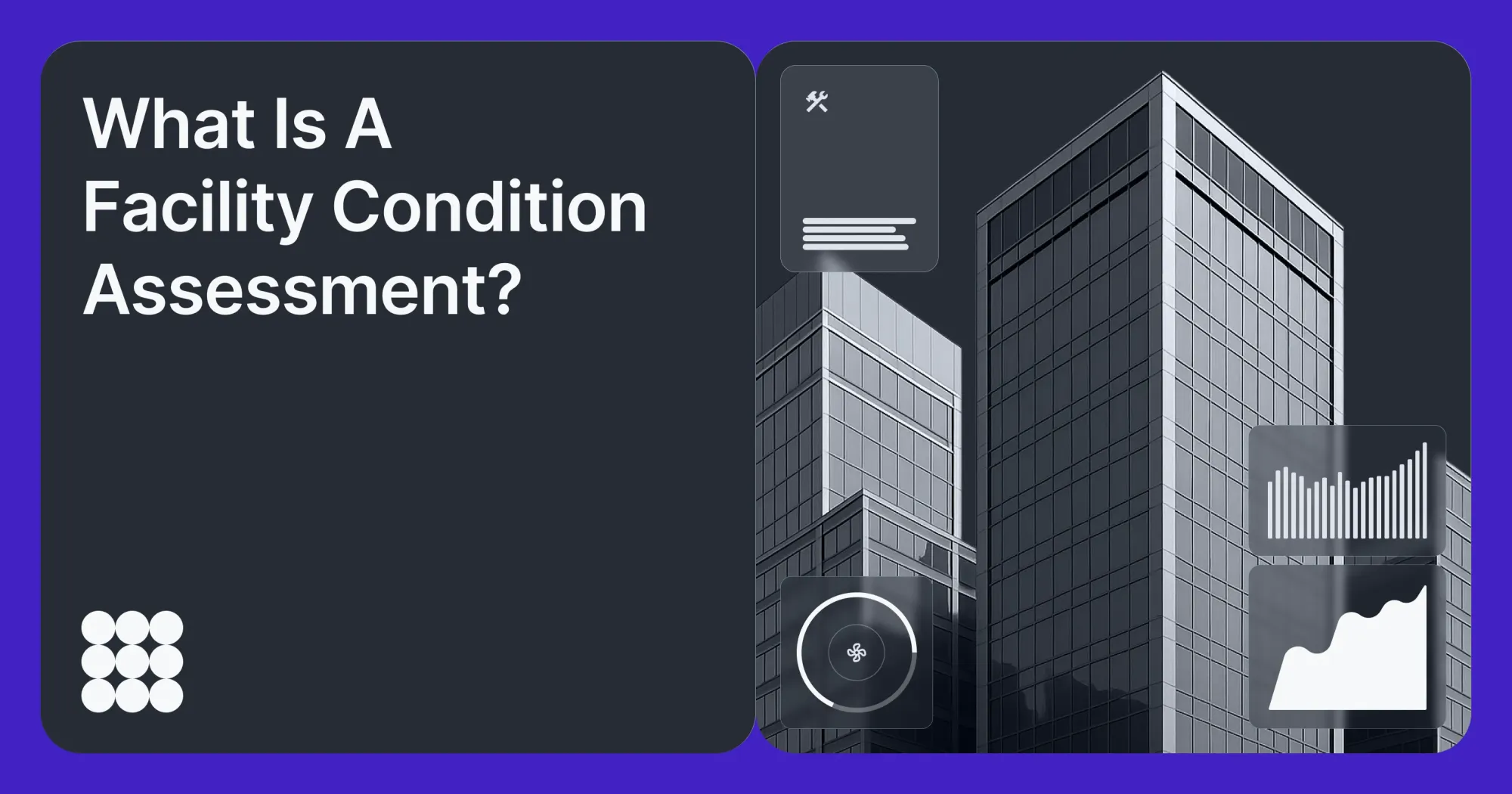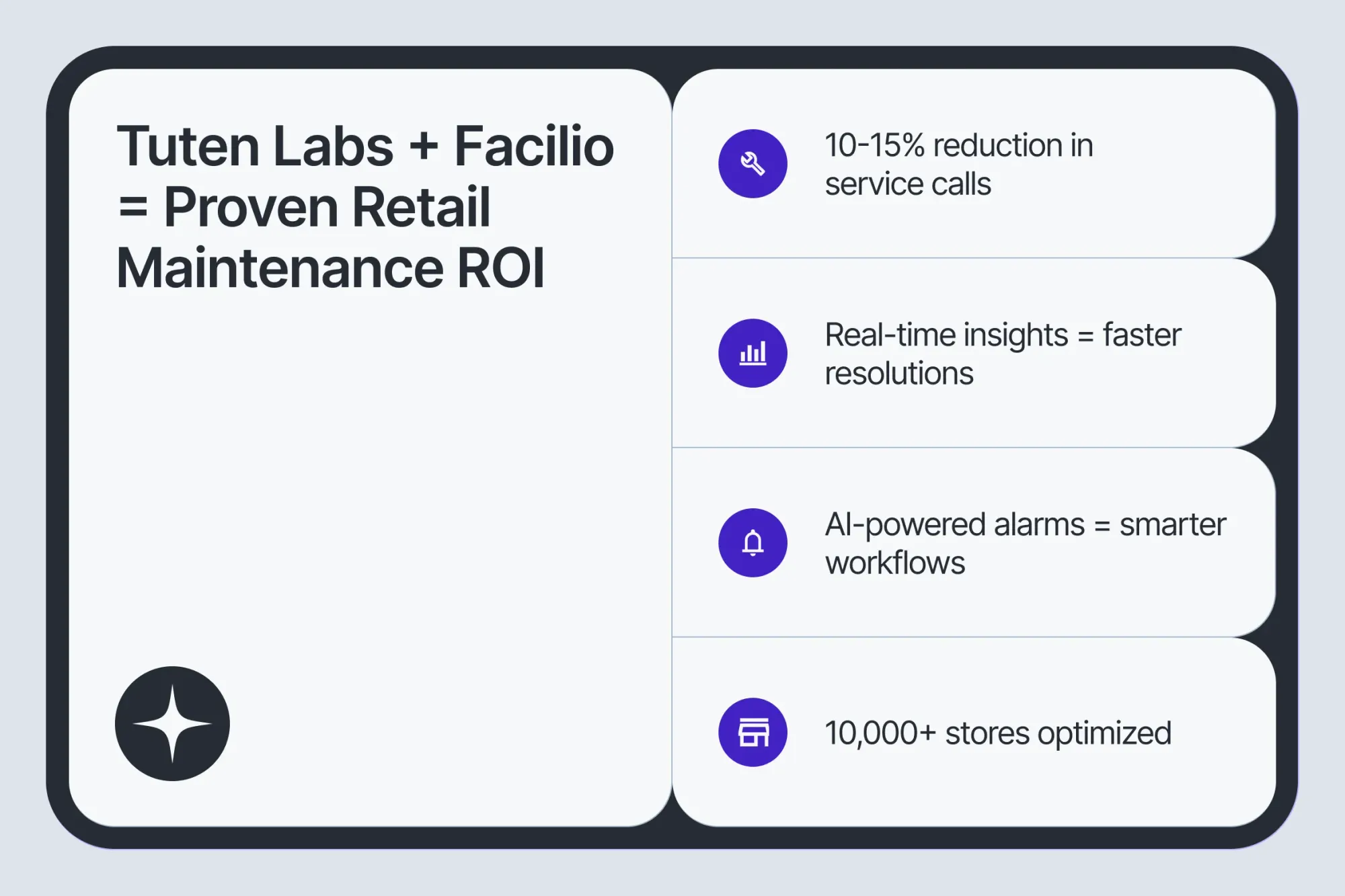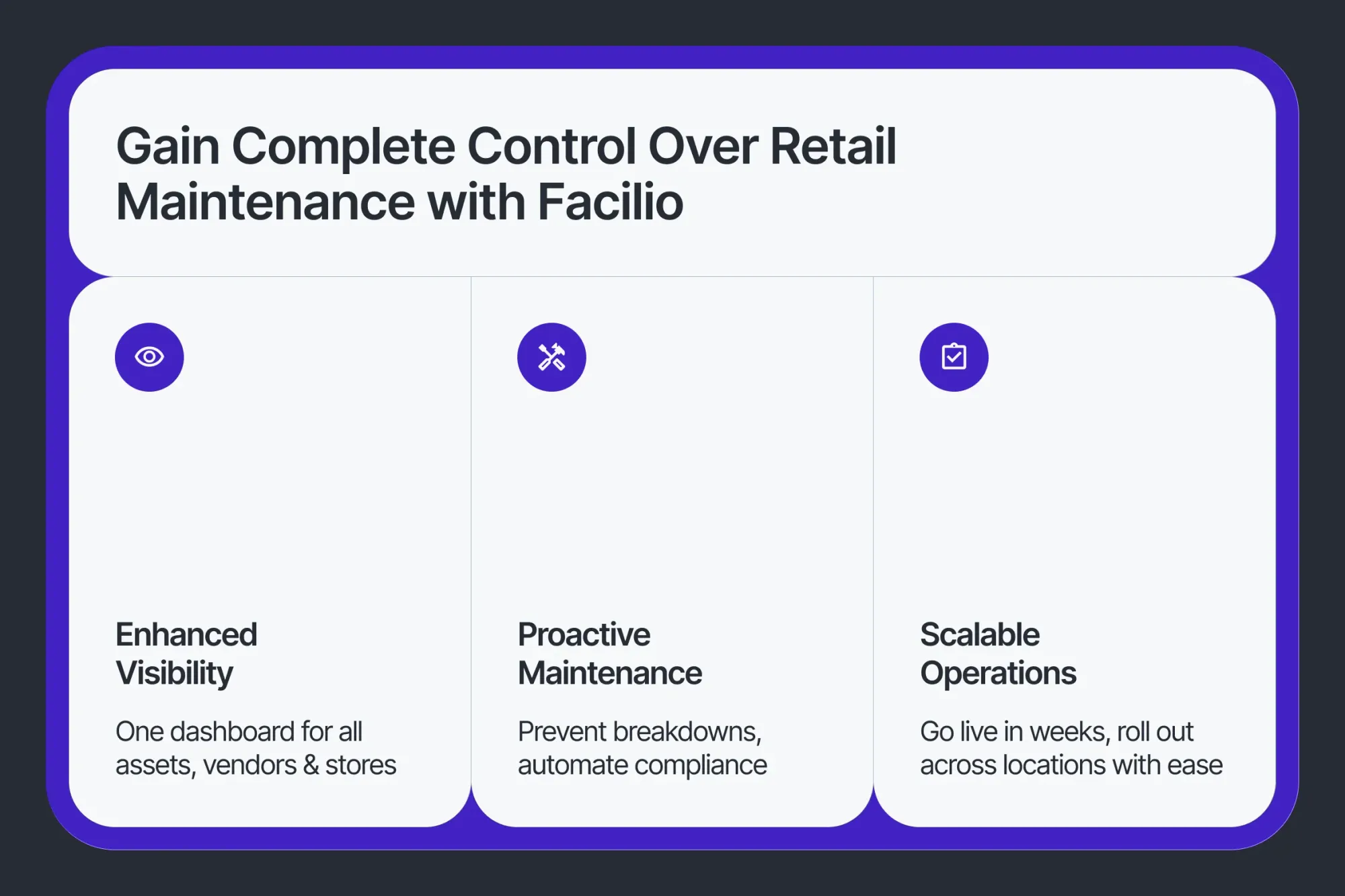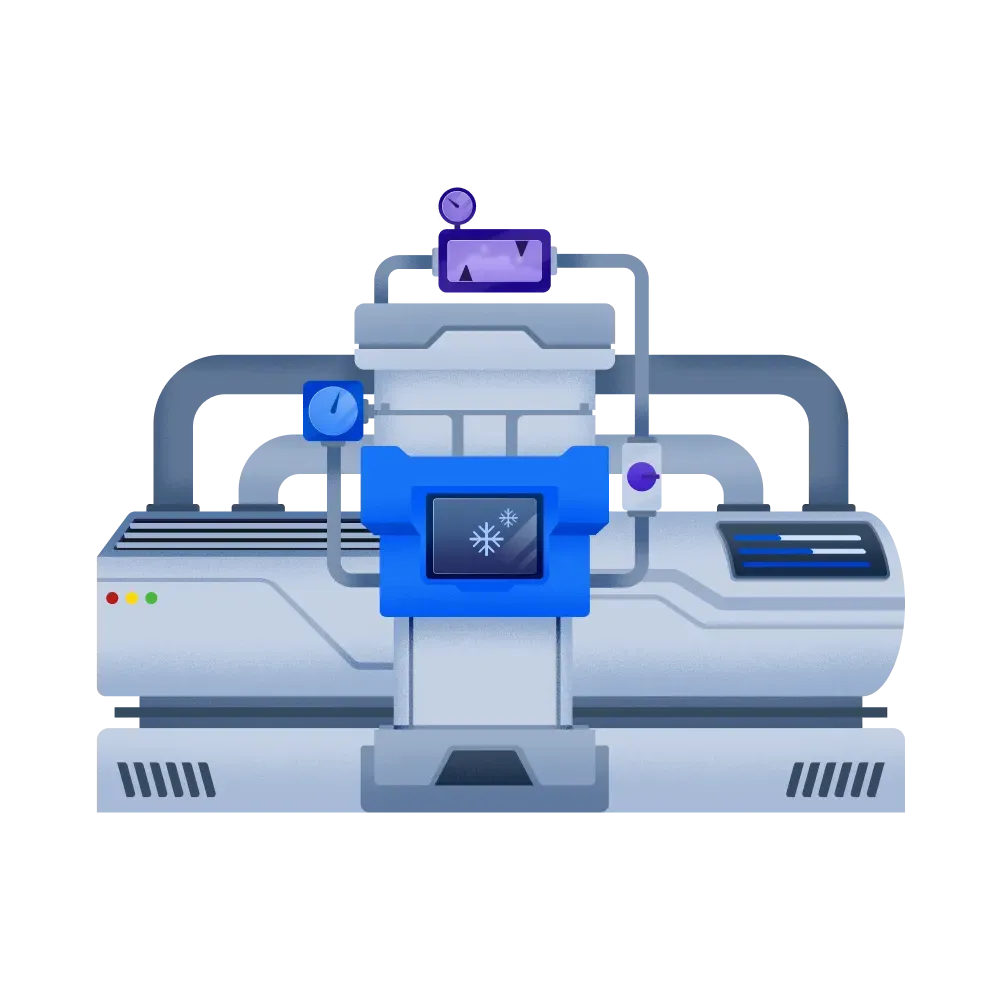Featured Connected Retail
CMMS ROI for Retailers: A Guide for Supermarkets and Growing Chains
In a supermarket or big-box retail chain, a single equipment failure — say, a freezer outage — can trigger product losses, safety violations, and even brand damage. For facility teams juggling hundreds of assets across locations, staying on top of maintenance without the right tools is nearly impossible.
That’s where retail maintenance management software comes in. But let’s address the real question: Is it worth the investment?
We have broken down the ROI of CMMS in the retail context — not just in terms of cost savings, but how it helps facility managers regain control, improve uptime, and deliver measurable value to the business.

Why ROI is hard to calculate in retail FM
At first glance, calculating ROI should be simple — compare the money you spend with the value you get back. But in retail facility management, it’s rarely that straightforward.
1. Fragmented Maintenance Systems
Many supermarket and retail chains still rely on a patchwork of spreadsheets, vendor calls, and outdated ticketing tools. These siloed systems don’t talk to each other, making it nearly impossible to track maintenance spending across stores, let alone measure returns.
2. A Reactive Maintenance Culture
Retail teams are often in firefighting mode — fixing what breaks instead of preventing breakdowns.
This reactive approach hides the real cost of emergencies: spoiled goods, overtime pay, customer inconvenience, and even fines. Without a baseline for preventive performance, ROI can’t be quantified.
3. Hidden Cost Leaks
From repeated service calls on the same asset to energy-wasting equipment running inefficiently, cost leaks are everywhere. But without centralized tracking, these losses go unnoticed and unaccounted for in traditional budgeting.
4. Lack of Asset Performance Data
Most teams don’t have the tools to measure how assets are actually performing over time.
Are your HVAC units degrading faster than expected?
Is one vendor underperforming across regions?
Without this visibility, calculating lifecycle ROI becomes guesswork.
5. Store-Level Variability
Each store has its own quirks — different layouts, foot traffic, and environmental loads. This inconsistency makes it difficult to benchmark maintenance effectiveness and compare store-level ROI across the portfolio.
Struggling to get full visibility into maintenance costs and vendor performance?
Facilio gives you centralized control across every store, vendor, and asset — in real time.
See how it works with a live demoCMMS ROI: What Goes into the Equation?
When measuring the ROI of a CMMS in supermarkets or big-box retail, it’s not just about slashing costs but more about optimizing operations, improving asset longevity, and supporting better customer experiences.

Let’s break it down:
📊 Tangible ROI Metrics
These are the hard numbers you can track before and after CMMS adoption:
- Reduced Equipment Downtime (%): With automated alerts, maintenance schedules, and real-time monitoring, CMMS reduces unplanned outages. Less downtime = more business continuity.
- Maintenance Cost Savings: Avoid reactive service premiums, reduce repeat work orders, and streamline vendor management — all leading to leaner maintenance budgets.
- Increased Asset Lifespan: Preventive maintenance keeps HVACs, refrigeration units, and escalators running efficiently for longer — delaying capex on replacements.
- Technician Productivity Gains: With mobile access and smart work order routing, field teams spend more time fixing and less time figuring out what’s next.
- Fewer Compliance Penalties & Faster Audits: Digital records make it easier to stay compliant with health, safety, and operational standards. Audit requests are met in minutes, not days.
- Lower Inventory Holding Costs: By tracking parts usage and automating reordering, CMMS prevents overstocking and stockouts — reducing unnecessary inventory spend.
✨ Intangible ROI Drivers
While harder to measure, these benefits have a real bottom-line impact:
- Improved Customer Experience: Cold aisles, flickering lights, or broken escalators frustrate shoppers. A well-maintained store is a better-performing store.
- Higher Employee Morale & Productivity: When store teams aren’t chasing faulty equipment or logging complaints, they focus better on the customer.
- Stronger Brand Reputation: Operational reliability signals professionalism. Customers associate store cleanliness, comfort, and smooth operations with brand quality.
- Better Decision-Making: CMMS dashboards provide FM and leadership with real-time insights, enabling proactive planning rather than reactive scrambling.
Real-World Impact: What Retailers Typically See
The ROI of a CMMS isn’t theoretical; retailers that implement it at scale see measurable improvements across asset performance, cost control, and operational visibility.
Here’s what real-world results look like:
🛠 30% Drop in Reactive Maintenance
A large-format electronics retailer saw a 30% reduction in reactive maintenance requests within the first six months of adopting a CMMS. By automating preventive schedules and using technician performance insights, they shifted from firefighting to proactive facility care.
❄️ Refrigeration Units Lasting 3 Years Longer
One supermarket chain noticed that by standardizing PMs (preventive maintenance) across their HVAC and refrigeration assets, they were able to extend equipment lifespan by up to 3 years — delaying high-cost capital replacements and reducing energy consumption.
📉 25% Reduction in Maintenance Costs Across 10000+ Stores
Tuten Labs, a global FM provider, used Facilio’s connected CMMS to digitize operations across 10,000+ large-format retail locations.
Within a short span, they were able to:

- 10–15% drop in service calls from end customers — thanks to faster resolution and fewer recurring issues
- Streamlined alarm management using Facilio’s AI engine, transforming scattered alerts into meaningful insights and speeding up root-cause identification
- Improved uptime and asset health through real-time visibility and mobile-first workflows, allowing technicians to act faster and more accurately
- A more hassle-free, predictable maintenance process, ensuring consistent service delivery across locations
This helped their retail clients maintain high standards while controlling operational spend — all at scale.
How to Calculate ROI of a Retail CMMS: A Real-Time Example
If you’re still wondering how to frame the ROI of a CMMS for your supermarket or retail chain, here’s a simplified example.
These are average benchmarks based on what retailers typically see within the first 12–18 months of implementation:
Want to calculate the ROI of CMMS for your own stores?
Use Facilio’s proven framework to benchmark savings, uptime, and asset performance.
Calculate your RoI nowWhy is CMMS ROI Higher in Big-Box and Supermarkets?
Not all retail formats are created equal when it comes to maintenance complexity.
For supermarkets and big-box retailers, the return on investment in a CMMS is often faster and significantly higher than in smaller retail operations. Here’s why:
🧊 1. High Volume of Assets Per Location
From refrigeration units and HVAC systems to automatic doors and escalators, each store is packed with critical equipment. A single failure can disrupt operations or lead to product losses — making asset uptime directly tied to revenue.
🌍 2. Multi-Location Complexity
Managing maintenance across hundreds of locations manually? It’s a logistical nightmare. A CMMS centralizes work orders, asset data, vendor performance, and cost tracking — giving FM teams portfolio-wide control and visibility.
⚡ 3. Energy-Intensive Operations
Supermarkets and big-box formats run around the clock, with energy-heavy systems like freezers, lighting, and climate control. A well-maintained asset consumes less power. CMMS-driven preventive maintenance helps cut utility bills and supports sustainability goals.
👣 4. More Footfall = Higher Risk, Higher Standards
These stores serve thousands of customers daily. That means more wear-and-tear, higher risk of accidents, and greater expectations for a clean, comfortable environment. A CMMS ensures that nothing slips through the cracks — from restrooms to escalators.
⏱ 5. Tight Margins & High Operating Pressure
In retail, even a 1% drop in operational efficiency can impact overall profitability. CMMS helps trim fat — reducing avoidable spend on reactive work, unplanned outages, and non-compliance penalties.
📈 6. Scaling Without Losing Control
As chains expand, manual maintenance processes don’t scale. A cloud-based CMMS enables standardized workflows across new stores without needing to grow the FM team proportionally.
Here’s a powerful and polished conclusion that highlights control, growth-readiness, and positions Facilio’s retail CMMS as the ideal solution:
Take Full Control of Retail Maintenance with Facilio’s Purpose-Built CMMS
Supermarkets and big-box retailers face one overwhelming fact: maintenance isn't a line-item cost—it’s a business-critical function.
Every equipment failure, energy spike, or compliance oversight ripples straight into customer experience, brand reputation, and operational margins.
CMMS isn’t just about saving money—it’s about mastering control and building momentum for the future.

🔍 Regain Complete Control & Visibility
Facilio’s Connected CMMS unifies maintenance, assets, vendors, compliance, and even IoT-powered energy systems into one single pane of glass. No more fractured tools, missed tickets, or manual tracking—just real-time oversight across your portfolio.
💡 Drive Proactive, Data-Led Operations
Add purpose-built workflows, drag‑and‑drop preventive templates, AI-based fault detection, and mobile-first work order routing—and your teams can prevent problems before they erupt
📈 Scale Confidently and Fast
Facilio’s platform deploys in weeks—not months, with built‑in retail templates, no-code workflows, and portfolio-wide rollouts. As you open stores or scale operations, every location operates within the same optimized maintenance ecosystem.
In today’s super-competitive retail environment, ROI isn’t just bottom-line savings—it’s about:
- 🛠️ Operational Mastery: Proactive maintenance, fewer disruptions
- ⚡ Energy Efficiency: Lower consumption, cost savings, sustainability wins
- 📋 Audit Readiness: Compliance through digital logs and automated reporting
- 🚀 Strategic Growth: Standardized operations, real-time analytics, scalable resilience
Investing in Facilio’s purpose-built retail CMMS means investing in future-ready operations, not just software. It means turning maintenance from a reactive burden into a strategic advantage—one that protects margins, delights customers, and supports growth.
✅ Ready to lead the shift?
Discover how Facilio’s Connected CMMS drives operational control, compliance, and growth for leading retail brands.

Think long-term. Invest in outcomes, not just tools.
Schedule My Demo Now

